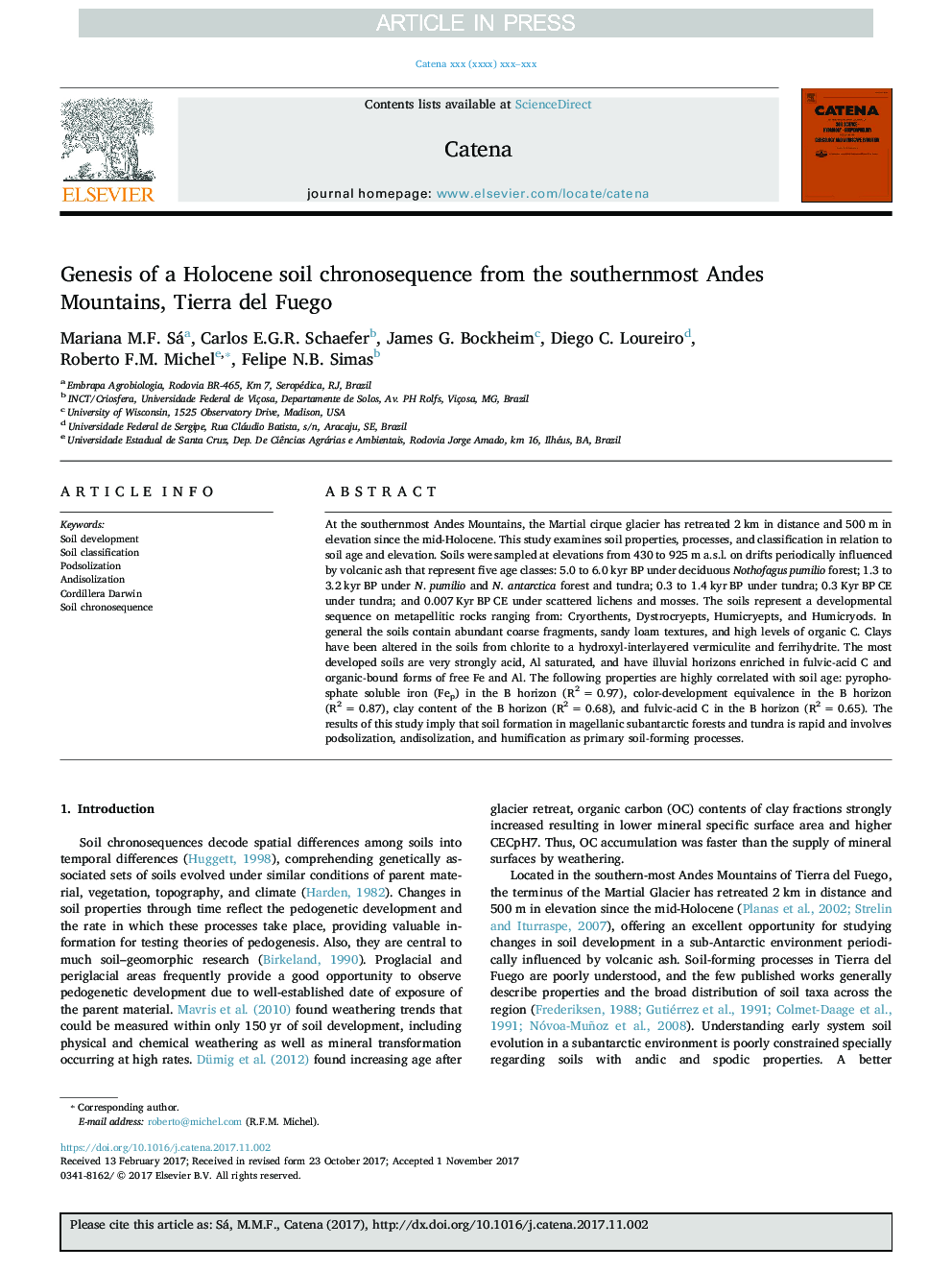| Article ID | Journal | Published Year | Pages | File Type |
|---|---|---|---|---|
| 8893761 | CATENA | 2018 | 12 Pages |
Abstract
At the southernmost Andes Mountains, the Martial cirque glacier has retreated 2 km in distance and 500 m in elevation since the mid-Holocene. This study examines soil properties, processes, and classification in relation to soil age and elevation. Soils were sampled at elevations from 430 to 925 m a.s.l. on drifts periodically influenced by volcanic ash that represent five age classes: 5.0 to 6.0 kyr BP under deciduous Nothofagus pumilio forest; 1.3 to 3.2 kyr BP under N. pumilio and N. antarctica forest and tundra; 0.3 to 1.4 kyr BP under tundra; 0.3 Kyr BP CE under tundra; and 0.007 Kyr BP CE under scattered lichens and mosses. The soils represent a developmental sequence on metapellitic rocks ranging from: Cryorthents, Dystrocryepts, Humicryepts, and Humicryods. In general the soils contain abundant coarse fragments, sandy loam textures, and high levels of organic C. Clays have been altered in the soils from chlorite to a hydroxyl-interlayered vermiculite and ferrihydrite. The most developed soils are very strongly acid, Al saturated, and have illuvial horizons enriched in fulvic-acid C and organic-bound forms of free Fe and Al. The following properties are highly correlated with soil age: pyrophosphate soluble iron (Fep) in the B horizon (R2 = 0.97), color-development equivalence in the B horizon (R2 = 0.87), clay content of the B horizon (R2 = 0.68), and fulvic-acid C in the B horizon (R2 = 0.65). The results of this study imply that soil formation in magellanic subantarctic forests and tundra is rapid and involves podsolization, andisolization, and humification as primary soil-forming processes.
Related Topics
Physical Sciences and Engineering
Earth and Planetary Sciences
Earth-Surface Processes
Authors
Mariana M.F. Sá, Carlos E.G.R. Schaefer, James G. Bockheim, Diego C. Loureiro, Roberto F.M. Michel, Felipe N.B. Simas,
